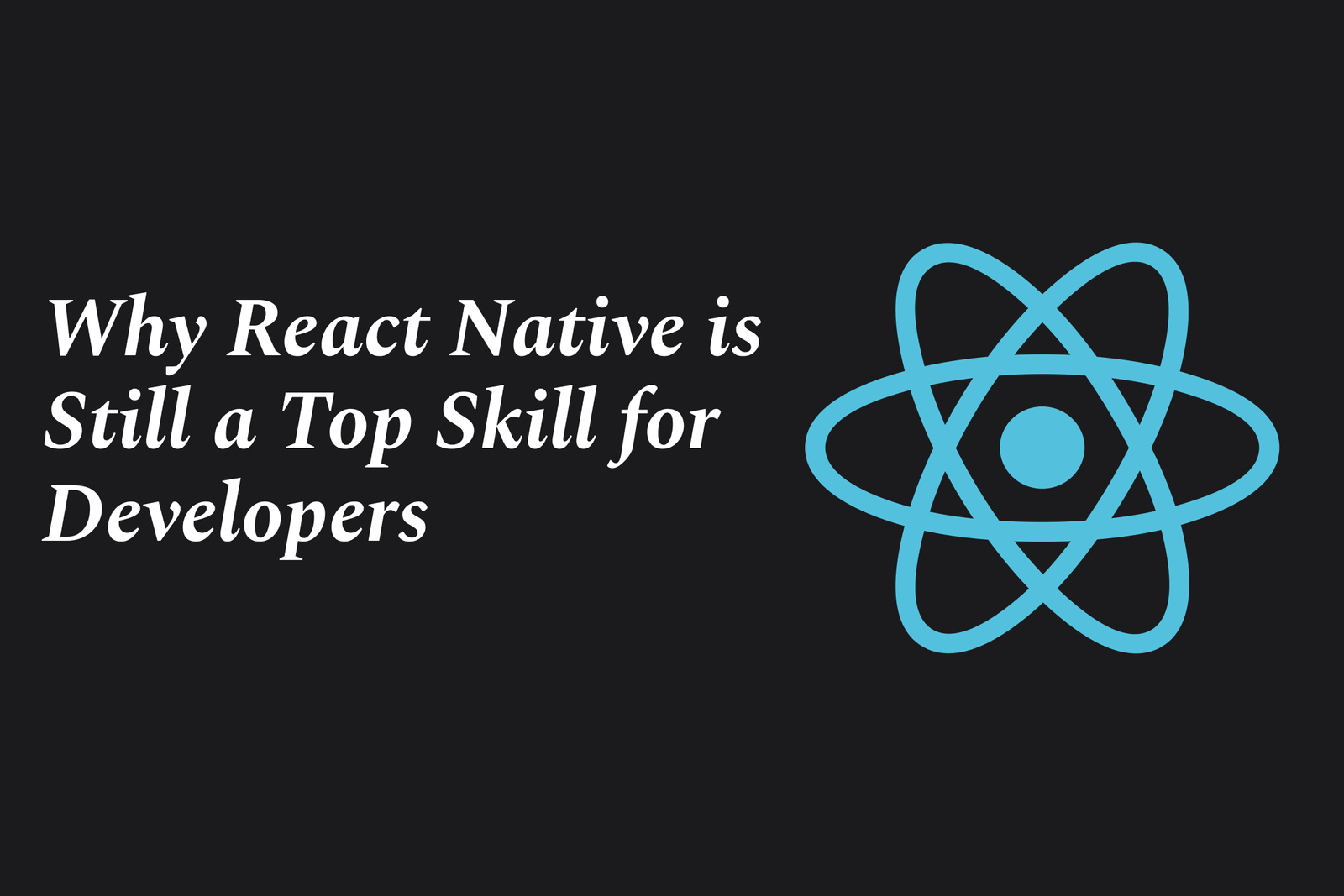Why React Native Is Still a Top Skill for Developers
React Native remains a top skill because it enables developers to build cross-platform mobile apps using a single codebase, combining the efficiency of JavaScript with native performance and UI, meeting user expectations while speeding up development and reducing costs.
Why React Native is Still a Top Skill for Developers
1 ) Bridging Web and Native Development
Many developers with web experience transition to React Native expecting to apply familiar patterns.
However, native mobile app development requires embracing platform specific components and UX standards rather than replicating web paradigms.
2 ) Importance of Native UI Primitives
Unlike the web, where UI components must be built from scratch, native platforms provide polished, cohesive design systems (e.g., iOS Human Interface Guidelines).
Utilizing native headers, navigation patterns, and controls leads to apps that feel familiar and high quality to users.
Custom building low level UI components to mimic native elements often results in subpar user experience.
3 ) Evolution of React Native Ecosystem
Early React Native implementations often used JavaScript driven UI components that only visually resembled native elements but lacked native “feel.”
Difficulties in integrating native code discouraged developers from using native modules, making JS first solutions dominant initially.
Recent improvements: better native module integration using Swift and Kotlin, easier configuration, and Expo support have enabled more authentic native experiences.
4 ) User Expectations and Platform Consistency
Users expect standard behaviors such as iOS back button functionality or native animations.
Apps that stick closely to native design conventions tend to be better received and feel more professional.
Examples like Apollo app preference over the Reddit official app demonstrate the value of native look and feel.
5 ) React Native as a Strategic Skill
Demand remains strong for developers who can build performant apps across platforms using a single codebase.
Mastery requires understanding both React Native framework and underlying native platforms to deliver seamless UX.
The evolving ecosystem and tooling make React Native a valuable and modern skill for mobile developers poised to grow beyond basic app development.
Summary: React Native continues to be a top skill because it enables cross platform app development while progressively allowing better use of native UI components and experiences. Developers who move beyond a web mindset to embrace native design principles and leverage evolving native integration tools will find React Native a powerful and in demand expertise.
https://justacademy.in/news-detail/real-time-database-plugins-in-flutter
https://justacademy.in/news-detail/android-cloud-backup-features
https://justacademy.in/news-detail/flutter-beta-features-worth-exploring
https://justacademy.in/news-detail/android-apps-integrating-blockchain
https://justacademy.in/news-detail/android-launch-event-announcements
Related Posts
Java supports GDPR and data privacy by enabling secure data handling through encryption, controlled access, and precise data management. It allows developers to minimize PII exposure, ensure data confidentiality, and design workflows that comply with data protection regulations effectively.
Java code quality tools have evolved to include advanced static analysis, integrated security checks, and AI-powered code reviews. These updates help developers detect bugs, enforce coding standards, and enhance security, streamlining the development process and improving overall code reliability.
Java remains a cornerstone in big tech companies, evolving with modern features like records, pattern matching, and virtual threads. Its robust ecosystem, enhanced performance, and growing AI integrations keep it vital for both legacy systems and innovative new projects.
Java and CI/CD pipeline optimizations streamline Java application development by automating builds, tests, and deployments. They improve efficiency through parallelization, caching, and secure secrets management, enabling faster feedback loops and more reliable, scalable software delivery.
Java supports modern cryptography standards through its flexible Java Cryptography Architecture (JCA), enabling integration of advanced algorithms like AES, EdDSA, and post-quantum tools. Libraries like Bouncy Castle offer FIPS-certified, hardware-accelerated implementations for secure development.
Java 23 enhances record patterns by enabling concise, direct destructuring of record components within pattern matching, simplifying type checks and data extraction. This improvement boosts code readability and expressiveness by reducing boilerplate in handling immutable data classes.
Java remains a top choice for mobile app backends, powering scalable, secure, and high-performance server-side solutions. Latest trends include cloud-native microservices, reactive programming, and enhanced JVM optimizations, enabling efficient, flexible, and robust mobile backend development.
Java SE 24 and LTS Java SE 21 offer enhanced features and performance, while Apache Spark 4.0.0 introduces Scala 2.13 support and advanced ML and SQL capabilities. Together, they empower developers to build scalable, high-performance data applications with modern tools.
JUnit 5 modernizes Java testing with a modular architecture, improved assertions, and seamless Java 8+ support. Beyond JUnit, tools like Mockito and AssertJ enhance mocking and assertions, creating a powerful, flexible ecosystem for writing clean, efficient Java unit tests.
Java plays a pivotal role in cloud automation tools by providing a robust, platform-independent language used to build scalable automation frameworks like Jenkins and Selenium, enabling efficient CI/CD pipelines, testing, and orchestration across diverse cloud environments.










